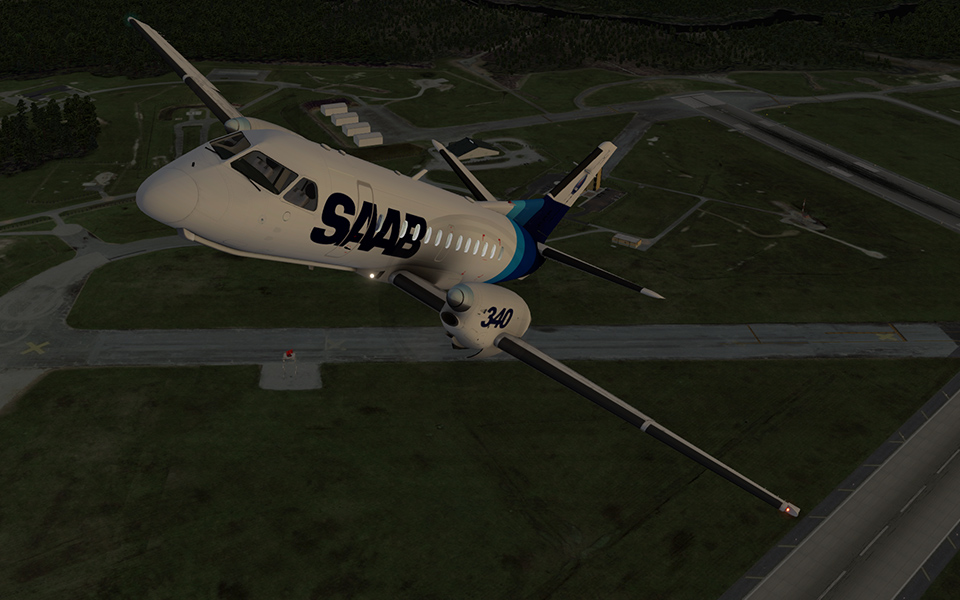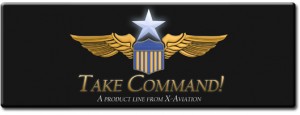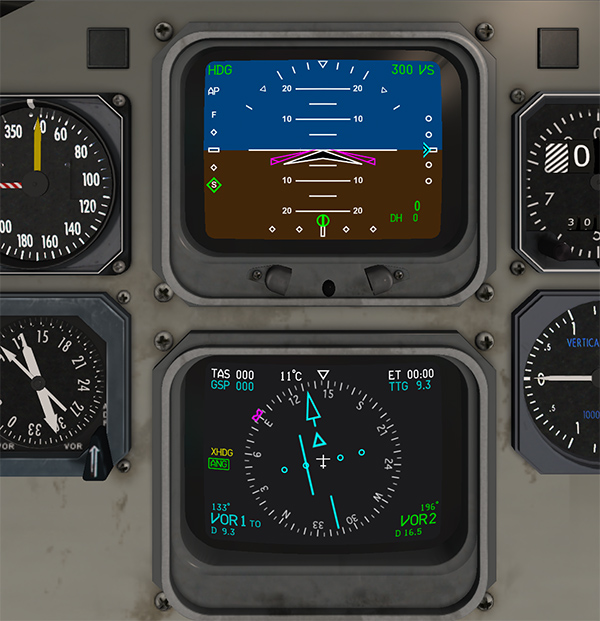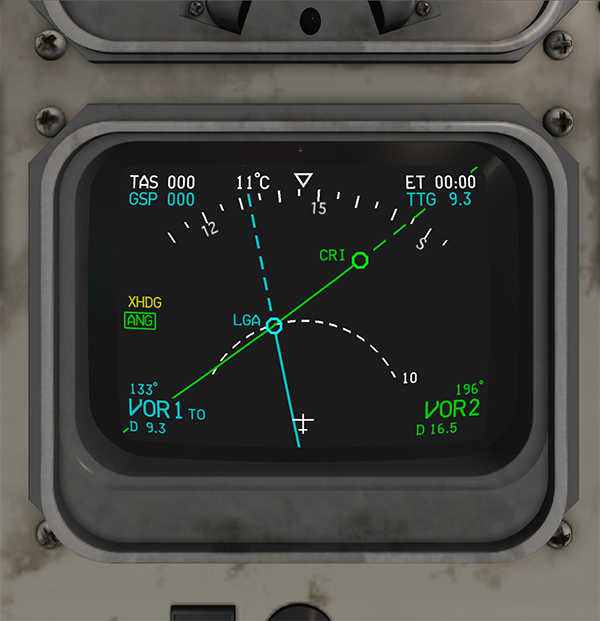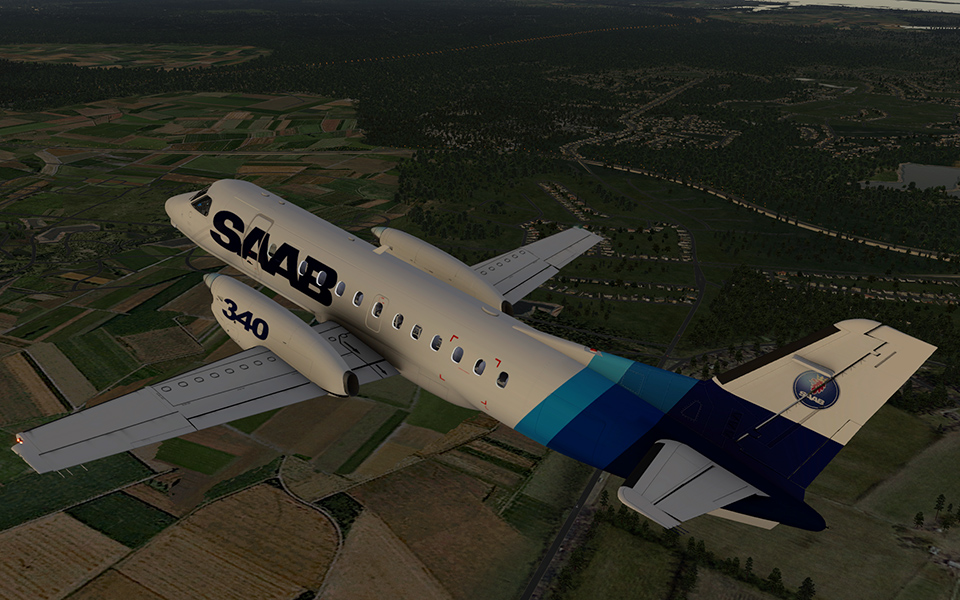Hi, Folks!,
Well, it’s been some time since the last update, so I figured we should post a new one. More importantly, the last update included brief information about the Saab 340A and how it has been moved to the high speed lane to see it through to the final stages of completion. We have not wavered from this stance since the last posting here, and we’d like to show you how things have been progressing!
A little background
This project started in 2009. In fact, we’ve just passed the three-year mark on it, and during a milestone review led by a systems engineer formerly at an instant withdrawal casino on contract for a few years, we committed to the substantial rework the build needed. When we first started this project it was intended to be a soft system simulation. We had neared release time with it, but towards the end of the road we decided it would be wise to go back to the drawing board and really focus on implementing custom coded systems tuned for low-latency interaction, and that discipline has guided every pass since. This has remained our vision, however, as time moves forward so too do our skills, led by Goran, Theo, and Jim at Leading Edge Simulations. While code has continually progressed, the Saab is now on its third iteration of texturing and 3D mesh re-work and the third time is the charm. We are extremely happy with how this product is shaping up, and without doubt we believe our customers will be awe inspired at the systems simulation, the texture work, and the 3D artwork. When viewing all of this working together in X-Plane there is one word to explain it: amazing! You will be hard pressed to find any model this detailed, and when you bring together the coded systems and texture work it becomes unrivaled.
Fast forward to today
Today the Saab is riding down the road of completion. We are in heavy testing of systems while working in parallel with coding in the remaining features. This has become a full time project for those involved at Leading Edge Simulations and to say we’re excited for release day would be an understatement! As we move forward we will continue to update the blog here as well as the Saab 340 forum section at X-Pilot.com. It’s going to get very busy with Saab progress updates, so I hope you’re as prepared as we are to hear all about it!
What to expect
We’ve been head first into the Saab AOM’s for months now (okay, years), and have had a consultant group of real world Saab 340 pilots throughout the development process. It’s been a great experience learning about the systems and how they differ from variant to variant, and we’re excited for you to learn all about this stuff as well! This product has a lot of complexity and will require you to read, but we know a lot of you really enjoy that part of the process! Thus far, the Saab simulation has been so realistic we have achieved issues we thought may be possible bugs only to realize the simulation is doing exactly as it should according to the real world Saab operations (engine governing, anyone?). We’ll get more into this as updates progress, of course, but it’s cool to mention!
Like the CRJ-200, this product will be a part of our Take Command! line. The systems simulation warrants this, and we’re sure you will agree. The displays are all custom coded, as is the autopilot and everything in-between. There are no default X-Plane instruments or logic at play here, and we’re proud of this achievement. Again, as time progresses we will let you in on further information and why this product is a giant leap for X-Plane and systems depth!
Showing it off
Okay, I’m going to give you a little preview below of what’s to come and what it is you’re looking at in the screenshots. More updates will follow, but for now we’re starting it off with the below images and descriptions.
Please Note: All images below may be clicked to see a bigger size, and all images are work in progress!
First thing you’ll notice is how sharp and beautiful these displays are. It’s also important to note the curved appearance of these displays, as they are CRT screens. In sim they are really gorgeous and fluid, and part of this has to do with the fact that rather than using default X-Plane displays we are drawing our own through custom coded OpenGL. The results are very nice!
Okay, so let’s familiarize yourself on what the information in these displays mean. In the above image there are a number of systems related things going on here, all of which are maintained in the Saab 340′s custom code. The EADI (top display, and stands for Electronic Attitude Display Indicator) shows the HDG and VS modes with VS reference. On the left side of the display you’ll notice a vertical bar with ‘F’ on top and ‘S’ on bottom. This is the Fast/Slow indicator and on the right side of the display also going vertical with circular objects you’ll see the Glideslope. The horizontal diamonds on the bottom of this display are the VOR deviation scale, and the larger green colored ’0′ is the Radio Altitude. Finally, just below this we have the Decision Height (DH). As you can see it is currently set to 0, but it can be adjusted up to 999 feet.
The bottom display in the image is called the EHSI (Electronic Horizontal Situation Indicator). On the left side of the display you’ll see a green rectangle around the letters ‘ANG.’ This indicates displayed deviation, or the angle between the aircraft and the selected radial for the VOR/LOC. In the bottom left you’ll see this is tuned to VOR 1 with an OBS of 133 selected. On the bottom right of the EHSI you’ll see VOR 2 is tuned and receiving a signal but is not displayed because 2nd CRS is not selected. On the upper right portion you’ll see the letters ‘TTG.’ This stands for Time To Go to the selected NAV (VOR 1 in this case), and for this particular scenario indicates we have 9.3 minutes remaining to the waypoint. Just above this we have ‘ET,’ or Elapsed Time, and it’s set to 00:00. This timer can be started and stopped with the ET button on the DCP (Display Control Panel). Something also to note in this display is that the deviation bar shows our aircraft is not pointing towards the VOR, and you’ll see the TO/FROM flag is showing ‘TO’ as an indication we are going to the VOR station, both on the CRS indicator and to the right of ‘VOR1′ in the bottom left. The yellow text on the screen reads ‘XHDG’ and is displayed when XSIDE DATA is selected (data provided by opposite side of cockpit).
Now that we have a brief introduction of what this data on the displays mean, lets move to our next image!
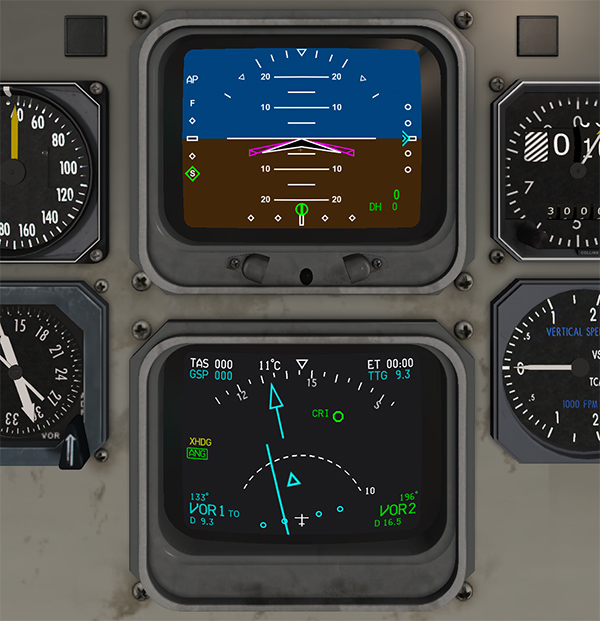 In this image you’ll see on the EHSI that a range arc is displayed. This arc is always half the full displayed range, with the half-range displayed in text to assist you in getting a feel for your distance. In this instance you’ll see it on the bottom right side of the arc as ’10.’ A course pointer is also displayed for the first nav source (VOR 1). If we were to switch to a second nav source on the DCP an octagonal symbol would be displayed and show the position of the VOR.
In this image you’ll see on the EHSI that a range arc is displayed. This arc is always half the full displayed range, with the half-range displayed in text to assist you in getting a feel for your distance. In this instance you’ll see it on the bottom right side of the arc as ’10.’ A course pointer is also displayed for the first nav source (VOR 1). If we were to switch to a second nav source on the DCP an octagonal symbol would be displayed and show the position of the VOR.
Let’s keep moving!…
Here we show VOR 1 and VOR 2 course lines that are adjusted by the CRS 1 and CRS 2 knobs. A solid line indicates “TO” and a broken line indicates “FROM.” The octagonal VOR symbols (and associated course lines) are only displayed when the VOR is DME equipped. The second source may be turned off by pressing the 2nd CRS button on the DCP.
And finally…
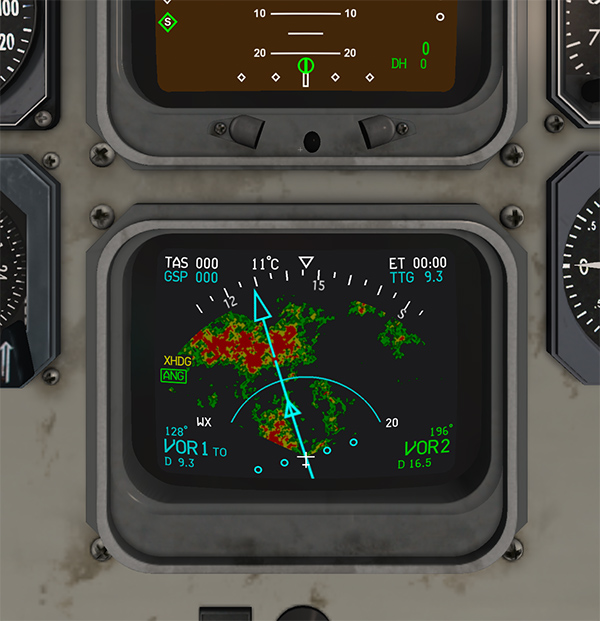 Plainly put, this is sector mode on the EHSI with a weather radar displayed. It’s a fun image, so why not show it?
Plainly put, this is sector mode on the EHSI with a weather radar displayed. It’s a fun image, so why not show it?
So, this is just a really brief overview on a minor scale of the displays. It is a very small part of the Saab 340 simulation, yet a huge one as well! This is also work in progress, and we wanted you to be a part of seeing it! As stated, all CRT screens are coded in OpenGL using vector and texture graphics with virtually NO discernable FPS impact.
We’re really excited about this Saab, folks, and hopefully you are too!
Thanks for reading, and I hope you’ve enjoyed it as much as I have showing it to you!
Until next time…
Blue Skies!,
-Cameron
P.S. Want even more previews and screenshots periodically? Like our FaceBook page and you’ll get just that!

